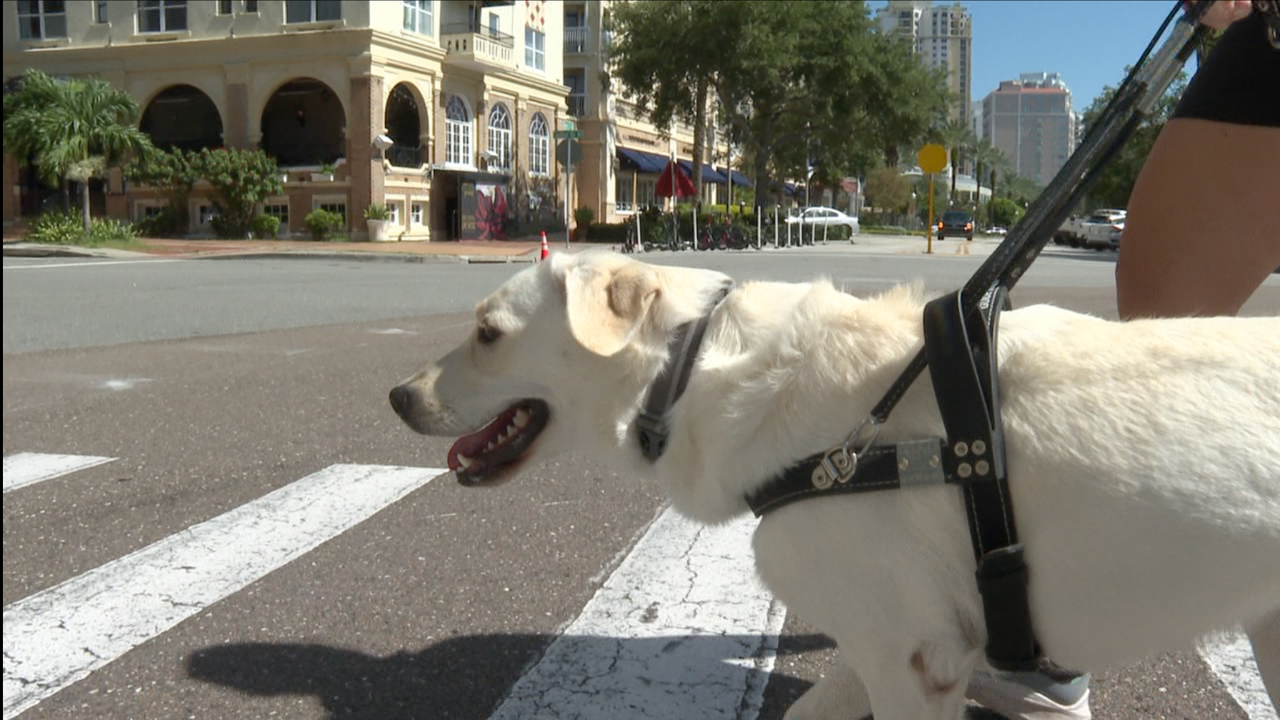ST. PETERSBURG, Fla. — They’re on a mission with a vision to help others. Tuesday, trainers with Southeastern Guide Dogs spent the morning leashing up 15 dogs and taking them out to the streets and sidewalks of downtown St. Petersburg to finish up their final training exercises before they’re paired up with someone who critically needs them.

Downtown St. Pete is a bustling place. It’s noisy, busy and full of distractions. The perfect atmosphere to put guide dogs and their skills to the test, according to leaders at Southeastern Guide Dogs.
“It’s good for us to see what our dogs can handle,” explained Alice Ryskamp, Southeastern Guide Dogs’ Training Team Manager.
Yet, 2-year-old black lab Mickey and his handler Jonathan Bjaland were not fazed by all of the distractions. Together, the team practiced crossing streets, walking along sidewalks and using crosswalks.

“These dogs are phenomenal at it. They love to do it and it’s a game to them, so they like to find the next thing,” Bjaland added.
The 15 dogs training on Tuesday are nearing the end of two years of rigorous training. They are tasked with helping their handlers cross the street, find the nearest curb and taking directions.
“They’re not a GPS. You can’t just say take me to the store, but you can say turn left, turn right and they’ll keep you safe from anything you may not see in your path of travel,” Ryskamp elaborated.
Soon, they’ll have the ultimate responsibility which will be maintaining the safety of someone who is visually impaired.
“Being a guide dog is not easy. We’re pretty much asking them to not be a dog and focus on what they’re doing, stop at these weird things on the sidewalk, ignore everything going on around them so only about 50% of them make it to placement,” Ryskamp explained.
Those who don’t become guide dogs can become service dogs, companions, be transferred into careers with law enforcement or adopted out. Even the dogs who near the end of their training may not be chosen as guides. Mickey seemed to do well in his tests and got his handler’s nod of approval.
“He did excellent, yeah,” Bjaland said while patting Mickey on the head and telling him he’s a good boy.
On August 9, 6 of the dogs will be paired up with visually impaired individuals. Ryskamp said they typically train more dogs than the number of people asking for a guide dog. That way, they are able to match the two based on how fast they like to walk, how their personalities match and other factors.
Southeastern Guide Dogs are always looking for volunteers, especially for puppy raisers who care for the dogs until they are old enough to start training full-time.





